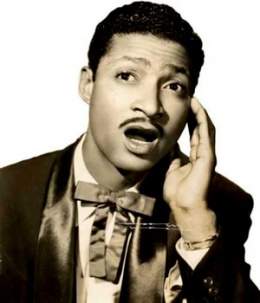
BARTOLOMÉ MORÉ GUTIÉRREZ, "THE BARBARIAN OF RHYTHM"
 Because of his conditions as a composer, performer and orchestra director, Bartolomé Moré Gutiérrez, Benny Moré, is identified in the history of Cuban popular music as El Bárbaro del Ritmo.
Because of his conditions as a composer, performer and orchestra director, Bartolomé Moré Gutiérrez, Benny Moré, is identified in the history of Cuban popular music as El Bárbaro del Ritmo.
His birth took place in the town of Santa Isabel de las Lajas, his beloved corner as he described it in a musical creation that he dedicated to him, on August 24, 1919, but the greatest of his life and the most relevant successes as a musician are related with Havana, where he appeared in popular festivals, theaters, cabarets and on radio stations and television channels.
Being of very humble origin and of the black race, he had to face life resolutely.
He lived during his childhood in the "La Guinea" neighborhood of his hometown. He was the oldest of 21 siblings.
When he was almost a child he had to work in agriculture and also performed the functions of shoeshine.
In his youth he was a forklift driver and later worked at the “Vertientes” sugar mill in the province of Camagüey. He used to sing while doing his daily chores.
From a very young age he had learned to play the guitar and used to accompany himself with this instrument when he sang.
In 1941 he decided to create a duet with José Luis Bolívar, and then he appeared at different parties and serenades.
It was in 1942 when he left his hometown for Vertientes and later joined a trio.
In 1943 he moved to Havana and in the country's capital he initially walked the streets singing in various places.
Later he was part of the Cordero quartet and then of the Cauto group.
For several years he continued to make a pilgrimage through the streets and other places of the Cuban capital. He managed to join the group led by Miguel Matamoros, with whom he traveled to Mexico in 1945.
He recorded several albums and sang in cabarets and other venues. He then decided to stay in Mexico. He continued to sing in this country and made recordings with different orchestras, including the one directed by Dámaso Pérez Prado, known as the King of Mambo.
 In 1950 Benny returned to Cuba, his native country where he wanted to succeed. He initially sang with the Mercerón Orchestra.
In 1950 Benny returned to Cuba, his native country where he wanted to succeed. He initially sang with the Mercerón Orchestra.
He performed on the Cadena Oriental de Radio, from Santiago de Cuba. He later toured the province of Oriente.
He then moved to Havana. After having sung with the best Cuban orchestras, he decided to found a group in 1953 under his direction. This is how the Giant Band arose, "the Tribe" as he used to call it, made up of 21 musicians.
His career of successes was vertiginous. He quickly acquired great fame nationally and internationally.
With the passing of time, many of his performances achieved significant popularity, including the one he dedicated to his hometown of Santa Isabel de Las Lajas.
Benny became an idol of dancers and lovers of Cuban music in general.
His last presentation was made, despite being ill, on February 16, 1963 in the town of Palmira in the current province of Cienfuegos. Three days later his death occurred in the Cuban capital.
His remains rest in the municipal cemetery of Lajas, the corner of him loved by him.
 In Havana, in the Lawton area, there is the Alí Bar cabaret where Benny Moré performed frequently because it was relatively close to where he lived, in the current municipality of San Miguel del Padrón.
In Havana, in the Lawton area, there is the Alí Bar cabaret where Benny Moré performed frequently because it was relatively close to where he lived, in the current municipality of San Miguel del Padrón.
The Ali Bar is described as the Benny's corner.
Another place in Havana closely linked to Benny Moré is the theater studio of the Radio Progreso station. There, together with his giant band, Benny performed on very frequent occasions and even on one occasion when he was improvising a “descarga” he even said with particular eloquence: "Benny Moré in the wave of joy again..."
In recognition of the presence and work of Benny Moré, it was decided years after his death, which occurred on February 19, 1963, in Havana, to identify the theater studio of the Radio Progreso station with his name.